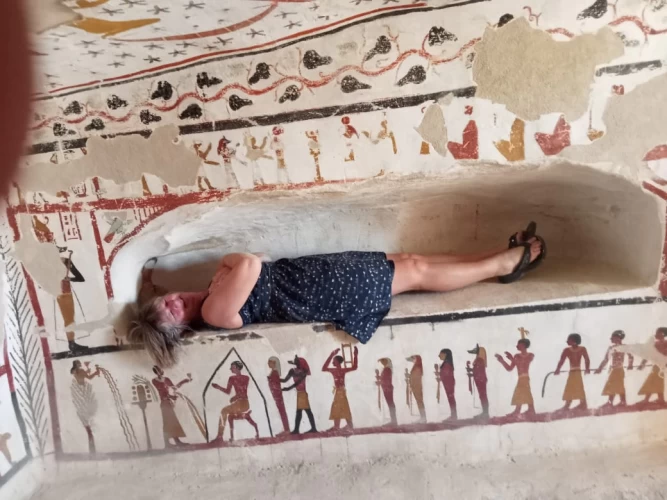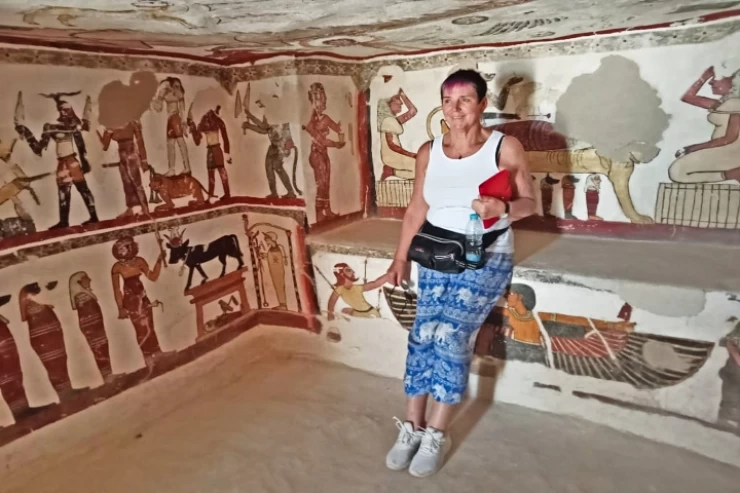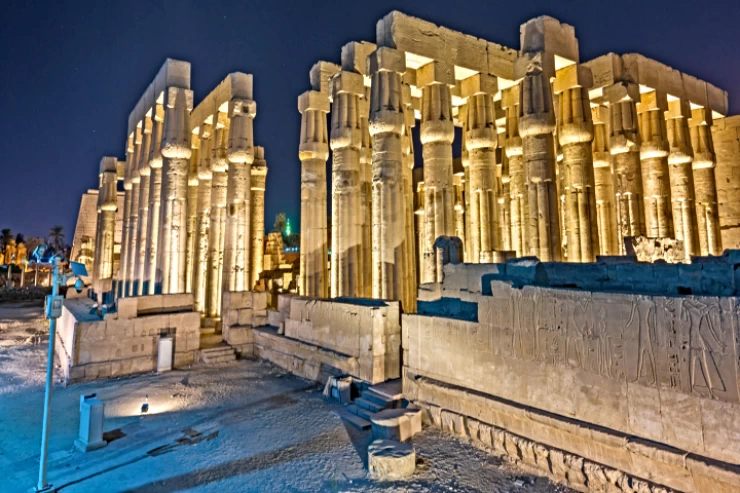To start your amazing day in Luxor, an outdoor museum city, our Egyptology tour guide will immediately pick you up from your hotel or Nile cruise. To get to the West Bank, drive for 35 to 40 minutes throughout the countryside.
Start your adventurous day by going to the Valley of the Kings. To protect their mummies and hide their treasure, the pharaohs of the New Kingdom carved their tombs into the mountains nearby. Your tour guide will explain everything from the outside because there is no inside advice for the tombs. Next, investigate the top three graves among those that are open. King Ramssess VI, King Mrenptah, King Tutmosis I, King Tutmosis III, Tut-Ankh-Amon, and King Amenhotep II are the most well-known tombs.
The first-ever labor movement against their pharaoh Ramesses III took place at Medinat Habu, which is located at the southernmost point of the Theban Necropolis. After that, we shall go there. The Ramesses III memorial temple, one of Egypt's best-preserved temples, is surrounded by a large, possibly defensive mud-brick wall.
A journey to the Valley of the Queens, also known as Ta-Set-Neferu, or "the land of beauty," where pharaohs' wives and sons were buried, will follow. Each of the more than 90 known tombs has an entrance hallway, a few tiny halls, and a chamber for the sarcophagus. Three queens' and kings' sons' tombs will be visible to you, including those of Amun-her-khopesh, Seth-her-khopesh, Khaemwaset, and a Ramesside Queen named Tyti. The earliest may be that of Sitre, wife of Ramses I. The most renowned are those of Nefertari, Ramses II's preferred Queen (extra ticket on the spot).
Before ending your tour of the West Bank with a photo stop in front of the massive sculptures of Memnon, which are 17 meters tall and formerly adorned the biggest mortuary temple on the west bank of the Bank of Luxor of King Amonhotep III, have lunch at a nearby restaurant (optional).
Ultimately, we will drop you off at your hotel or Luxor Nile cruise.




























